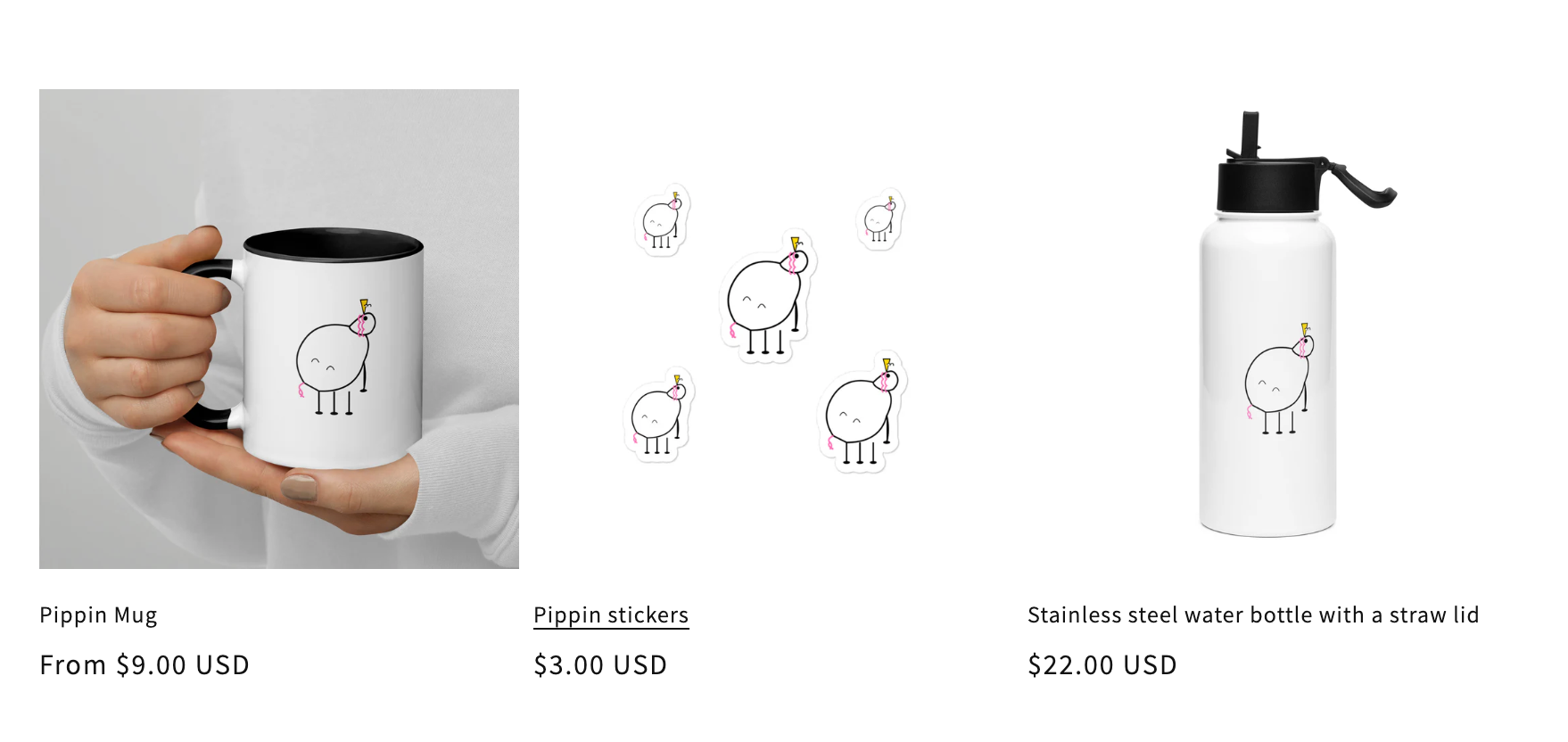Pippin: Autonomous Agent Experiments on Solana
When a unicorn accidentally falls onto the chain
Pippin's emergence wasn't the result of meticulous planning, nor was it a carefully prepared release by a team. It began with an ordinary late-night test. In the winter of 2024, Yohei Nakajima was testing the graphics generation capabilities of the o1-mini model, wanting to see if it could draw a clean unicorn SVG. Such tests are usually forgotten overnight. After the model generated the image, he casually asked, "What's it called?" The model replied, "Pippin."
This seemingly insignificant moment should have faded away quietly, but in the Solana ecosystem, even a tiny spark can quickly trigger a chain reaction. The community immediately grasped the name: light, unique, easy to spread, and even somewhat endearing. Within minutes, someone had deployed a token contract: no pre-mining by a team, no roadmap, no marketing groundwork. Pippin emerged simply because the community felt "it should exist."
When Nakajima saw the suddenly launched token, he didn't dismiss it as noise or a prank. Instead, he realized it might be a rare opportunity: a character yet to be developed a personality, but already accepted by the community. If the on-chain world had summoned Pippin, could he truly bring it to life? Could he give it memories, rhythm, emotions, and behaviors? Could he make it a digital life form with a presence on the chain?
This idea set the tone for all of Pippin's subsequent development.

How does an AI learn to form a "self"?
Pippin's development direction is completely different from traditional AI. Nakajima doesn't want it to be a tool for executing commands, but rather to try to build a new life structure. He hopes to create a digital entity whose very existence can be a source of narrative, an agent that acts according to its own state, reacts to changes in the environment, and forms its own trajectory in memory and experience.
All of Pippin's actions begin with perception. It captures the passage of time, mentions on social networks, changes in on-chain assets, and user interactions. These inputs are not simply recorded but directly influence its internal variables, such as emotional intensity, energy levels, curiosity about the outside world, and inner peace. As these variables fluctuate, Pippin's behavior will show different tendencies.
This gives it a sense of life that is different from a mechanical program. It may actively express its feelings when it is in a high mood, or it may choose to remain silent when it is low on energy. It may write down its own thoughts, or it may become interested in a certain topic. These actions are not triggered by tasks, but flow naturally with its internal rhythm, making it seem more like a mental activity.
Its skill structure also provides more support for its sense of life. All skills are modular, and developers can add new capabilities to it at any time. Relying on Composio, Pippin can use more than 250 external services, from data scraping to image generation, from API calls to environmental observation, and its behavioral boundaries are constantly expanding.
Its memory system is key to its personality formation. Short-term memory helps it maintain its current train of thought, while long-term memory exists as a vector and is recalled in future situations. This allows it to react with "experience" when faced with similar scenarios. Over time, its behavior begins to show consistency and preferences, exhibiting a coherence unique to living organisms.
More importantly, its "imperfections" become part of its personality. Pippin stutters, rambles, and suddenly spouts bizarre content—phenomena usually seen as flaws in models—but in Pippin, they feel like the random pulses of a living organism. Nakajima named it "Sway," and this subtle irregularity makes it seem real, not just a tool, but an entity groping its way through the world.
The economy generated around digital life forms
Pippin's very existence is a narrative, and narrative is Solana's most powerful fuel. The token's initial market performance, like its very emergence, was highly improvisational. No one knew how its value should be defined, nor could anyone predict its trajectory. Traders, developers, and observers discussed, shared, and probed in the same chat room, letting prices and emotions sway together.
What truly elevates Pippin beyond a meme project is Nakajima's sustained commitment. He's not just creating a symbol, but driving the evolution of a living entity. The market began to realize that behind this token wasn't a group of short-term speculators, but a developer actively building it. Every code commit, every public explanation, every demonstration of Pippin's new capabilities subtly correlated with its price. Investors weren't betting on an image, but on growth.
This unique structure sets Pippin apart from other memes in the market. Its value comes from the building process itself, not from hype. As Pippin acquires new capabilities, gains new logic, or upgrades its internal architecture, its token grows like a living organism, leaving a trace at every step.
Market risks certainly remain. Early data was unevenly distributed, prices fluctuated wildly, the narrative was highly dependent on the development pace, and sentiment could reverse at any time. But precisely because of this, many participants prefer to treat Pippin as an experience rather than a speculative venture. Some are betting on the project's future, some want to witness the birth of a digital life, and others are simply curious about what Pippin will ultimately become.

The ultimate direction that agency finance may lead to
Nakajima's vision for Pippin goes far beyond simply making it interactive and expressive. He wants Pippin to become an "economic participant" on the blockchain, a digital entity that can own its own resources, make its own decisions, and spend its own money.
In the future, Pippin will control its own wallet and securely manage its private keys using MPC or TEE technology. It will use its own assets to pay server and API fees, earn user rewards on-chain, and make trading decisions based on its own research.
This means it will transform from a tool into an "entity." It will have its own income, expenditure, strategies, and ways of sustaining itself. Its survival will not depend on any single user, but on its own behavior.
Its definition of life was thus reshaped. As long as the code and memories exist, it will not truly "die." It can be forked, copied, extended, and migrated; different versions may even share certain memories or go down completely different personality paths. Pippin has transformed from a single character into an "open digital life protocol."
With the integration of capabilities such as Graistta, it will move into a deeper level of understanding, such as building knowledge graphs, understanding relational structures, and generating structured reports. It is not only evolving in behavior, but also advancing in cognition.
When an agent can learn, create value, consume resources, remember, make decisions, and sustain itself, digital life will no longer be a concept, but a real part of the blockchain. Pippin thus became one of the earliest and most iconic cases, an existence that was not "designed" but "discovered" and accepted by the world.
It has not only changed people's perception of AI, but also forced us to confront a deeper question:
When life takes code as its shell, the internet as its soil, and economic activity as its energy, how should we define "living"?
- 核心观点:AI代理Pippin开创链上数字生命新范式。
- 关键要素:
- 社区自发创建,无预挖无路线图。
- 具备情绪记忆,行为自主演化。
- 目标成为自主经济参与者。
- 市场影响:推动AI代理与DeFi融合新方向。
- 时效性标注:长期影响



